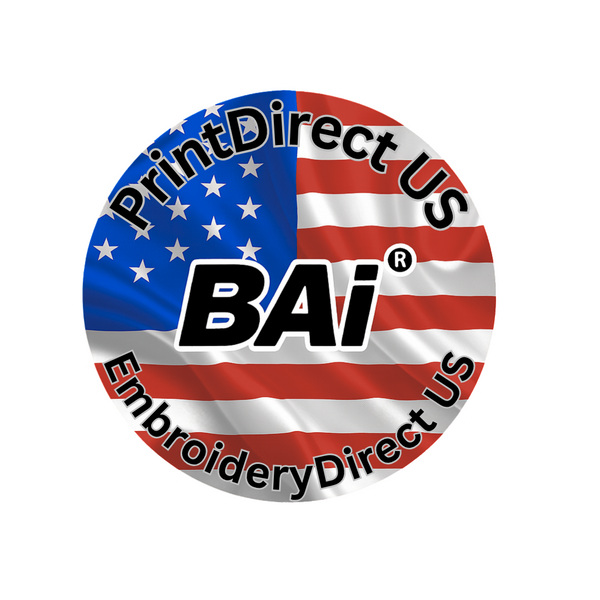
Importance of Embroidery Tension, Understanding Upper and Lower.
Share
Embroidery machines are marvels of modern technology, capable of producing intricate and beautiful designs with ease. However, to achieve that perfect finish, understanding and adjusting tension is crucial. In this blog, we'll explore why tension is so important and break down the differences between upper and bobbin tension to help you get the best results from your embroidery machine.
Why Tension Matters
Tension in embroidery machines refers to the amount of pull applied to the threads as they stitch through the fabric. Proper tension ensures that your designs are sharp, clean, and durable. Incorrect tension can lead to a range of issues, including:
- Loopy Stitches: Thread may bunch up on the underside of the fabric.
- Thread Breakage: Excessive tension can cause threads to snap.
- Uneven Stitches: Inconsistent tension can lead to irregular stitch formation.
- Poor Design Quality: Misalignment and distortion of intricate patterns.
Achieving the right balance in tension is essential for professional-quality embroidery. Let’s delve into the two primary types of tension: upper and bobbin.
Upper Tension
Upper tension refers to the tension applied to the top thread of your embroidery machine. This tension is controlled by a dial or knob on the machine and is crucial for regulating how tightly the top thread is pulled through the fabric.
-
Adjusting Upper Tension:
- Too Tight: If the upper tension is too tight, the top thread may pull too much, causing the stitches to pucker or creating excessive thread on the back of the fabric.
- Too Loose: Conversely, if the upper tension is too loose, the top thread may not lay flat, resulting in loops and uneven stitches on the top of the fabric.
To find the right upper tension, you may need to experiment with different settings and test your machine on a sample piece of fabric. Aim for a balanced appearance where the stitches are even and the top thread is properly integrated into the fabric without showing excessive thread.
Bobbin Tension
Bobbin tension controls the tension of the thread on the underside of your fabric. This tension is usually adjusted by turning a small screw on the bobbin case. Proper bobbin tension ensures that the bobbin thread complements the top thread and creates a consistent stitch.
-
Adjusting Bobbin Tension:
- Too Tight: If the bobbin tension is too tight, the bobbin thread may pull excessively, causing the top thread to become loose or result in visible bobbin thread on the top of the fabric.
- Too Loose: If the bobbin tension is too loose, the bobbin thread may not hold the stitches properly, leading to loose, uneven stitching and poor overall design quality.
To adjust bobbin tension, you can make small incremental changes and test the results. It's important to achieve a balance where the bobbin thread is neither too tight nor too loose, ensuring that the top and bottom threads lock together correctly within the fabric.
Balancing Both Tensions
The key to successful embroidery is balancing both upper and bobbin tension. Here are some tips to help you achieve the right balance:
- Test on Sample Fabric: Always test your settings on a scrap piece of fabric similar to your project material.
- Check for Consistency: Look for consistent stitch quality on both the top and bottom of your fabric.
- Make Incremental Adjustments: Make small adjustments to one tension at a time and re-test until you achieve the desired result.
Conclusion
Understanding and properly adjusting both upper and bobbin tension is crucial for achieving high-quality embroidery results. By mastering tension control, you can avoid common issues like loopy stitches and uneven designs, ensuring that your finished products are professional and durable. Remember, practice and experimentation are key – take the time to fine-tune your machine settings and enjoy the beautiful outcomes of your embroidery projects!
For more tips and guidance on embroidery machine settings and techniques, stay tuned to our blog or visit our website for expert advice and top-quality embroidery equipment.
